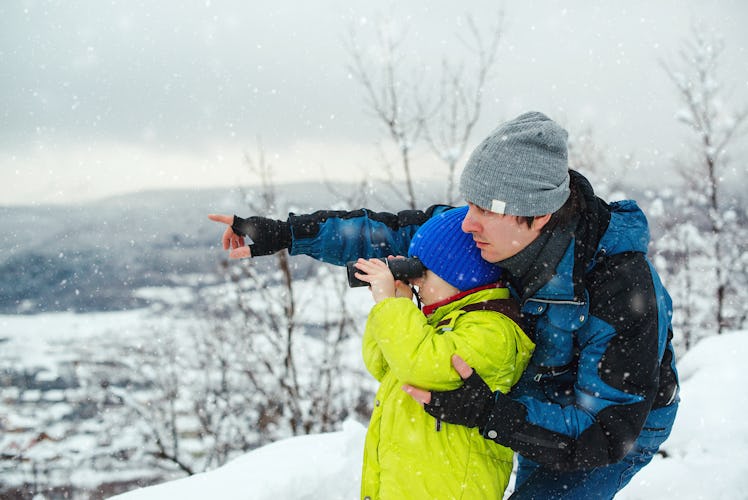How To View The 'Lunar Occultation' Of Uranus (Safely)
On New Year’s Day, a Lunar Occultation is set to kick off a 2023 full of dazzling sky-gazing.

In just the first hours of 2023, a really interesting sky show will be happening between the moon and the planet Uranus. If you and the kids look forward to interesting things in the sky, here’s what you need to know about the upcoming lunar occultation, including important safety information.
What is a lunar occultation?
According to In-The-Sky.org, an occultation “refers to any astronomical event in which one object appears hidden behind another.” It’s not the same thing as an eclipse, which happens when a shadow is cast, “such as when the Moon's shadow falls over Earth during a solar eclipse.”
Lunar occultation happens when the Moon covers the view from another object — in this case, Uranus will disappear behind the Moon.
When is the lunar occultation happening?
The upcoming lunar occultation will happen on January 1, starting at 3:29 pm EST, when Uranus will disappear behind the un-illuminated side of the Moon.
The event won’t be visible from everywhere, though. According to In-The-Sky.org, “lunar occultations are only ever visible from a small fraction of the Earth's surface.” The reason is that the Moon is really close to Earth, so the position in the sky is different depending on where you live.
The lunar occultation will be most visible in Europe, Canada, and around New York City. Uranus will reappear from behind the Moon on the illuminated side of the moon around 4:37 pm EST.
How can I watch the lunar occultation with the kids?
Since Uranus isn’t visible to the naked eye on Earth, if you and the kids want to watch Uranus disappear behind the Moon, you’ll need binoculars or a telescope.
According to EarthSky, Uranus is easy to spot with binoculars. "You probably need a telescope to pick out its disk shape; remember, only stars are pinpoints," the website explained. "But binoculars should enhance its color; it shines with greenish-blue hue."
Remember important safety information when looking at the sky when the Sun is out.
Chances are most of the sky shows you and the kids see are in the evening hours when the sun has already gone down. We’re used to looking up at the sky when looking at meteor showers and full moons with the naked eye — and safely.
However, when looking up at the sky during the day, when the Sun is still out, it’s important to remind the kids how dangerous it is to look at the Sun, especially when using binoculars or a telescope.
“Solar radiation damages the retina,” Dr. Joseph Chacko, an ophthalmologist at the UAMS Harvey & Bernice Jones Eye Institute, told the University of Arkansas for Medical Sciences. “Sunlight damages the eye as its light is focused by the cornea and lens onto the central retina, or macula, where it causes a retinal burn, which then forms a scar.”
Looking at the lunar occultation doesn’t mean you have to look anywhere near the Sun, but when we have our telescopes and binoculars out during the day, mistakes can happen. And even an accidental look at the Sun with binoculars or a telescope can cause permanent blindness.
“If you are using a telescope, be sure that any small finder telescope is capped,” the European Space Agency suggests. “If you're using binoculars, keep the cover on one of the two tubes.”